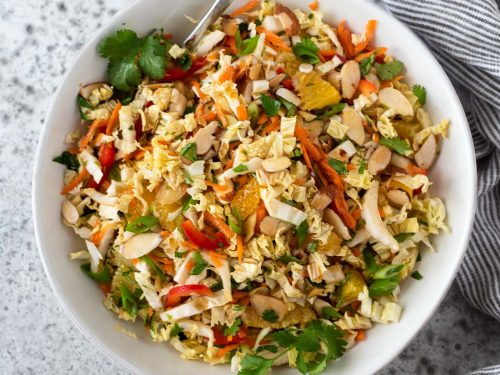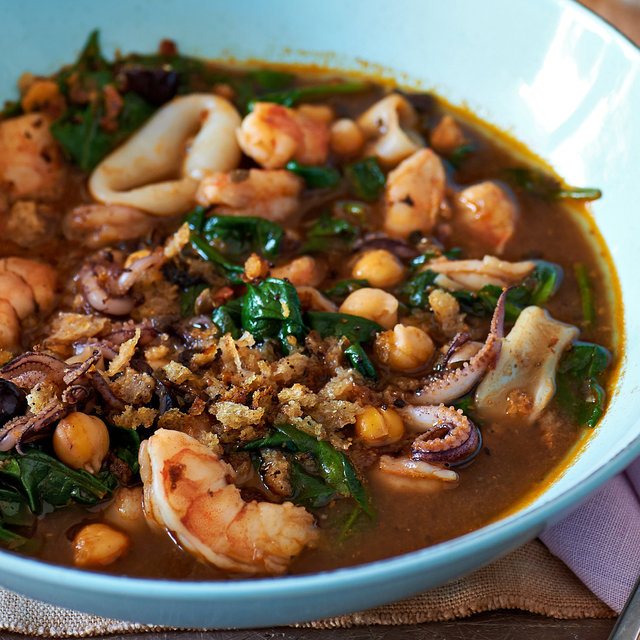Napa Cabbage Salad: Health Benefits, Recipes, and Serving Tips
Napa cabbage, or Brassica rapa subsp. pekinensis, has deep roots in East Asian cuisine, particularly in China, Korea, and Japan. This vegetable, cultivated for over 1,000 years, has been a staple in dishes like kimchi and sukiyaki. Its mild flavor and crunchy texture make it popular in salads, especially as global cuisine trends embrace more Asian influences. Napa cabbage has cultural significance beyond its culinary uses, symbolizing prosperity and good luck in various traditions.
Health Benefits
Napa cabbage offers numerous health benefits due to its nutrient profile. It’s rich in vitamins C and K, promoting immune function and bone health. With only 16 calories per 100 grams, it aids in maintaining a healthy weight. The high fiber content supports digestive health, while antioxidants like beta-carotene help fight inflammation. Additionally, Napa cabbage contains folate, essential for DNA synthesis and repair, making it a nutritious choice for your salads.
Key Ingredients in Napa Cabbage Salad
Napa Cabbage: Nutritional Profile
Napa cabbage, often known as Chinese cabbage, is a nutrient-dense vegetable packed with vitamins and minerals. It’s abundant in vitamin C and K. One cup of shredded Napa cabbage contains roughly 20% of the daily recommended value of vitamin C and 50% of vitamin K. This leafy green also provides folate, calcium, and potassium. Low in calories, Napa cabbage has only about 13 calories per cup. Its high fiber content helps digestion and promotes a healthy gut, making it a perfect base for salads.
Common Pairings and Variations
Napa cabbage pairs well with a range of ingredients, enhancing both flavor and texture. Common additions include:
- Carrots: Shredded or julienned, carrots add sweetness and a vibrant color.
- Green Onions: Thinly sliced green onions give a mild onion flavor without overpowering.
- Sesame Seeds: Toasted sesame seeds add a nutty taste and crunch.
- Almonds: Slivered almonds offer a crunchy contrast and subtle nutty flavor.
- Mandarin Oranges: These citrus fruits add sweetness and a juicy texture.
- Soy Sauce and Rice Vinegar: Common dressing components that provide a tangy umami flavor.
Variations of Napa cabbage salad often include proteins like grilled chicken or tofu to make it a more substantial meal. You can also use other vegetables like bell peppers or cucumbers for added crunch and color. Dressing variations range from a simple vinaigrette to creamy peanut sauce, allowing for creativity in flavor profiles.
How to Prepare Napa Cabbage Salad
Choosing the Right Cabbage
Select fresh Napa cabbage to ensure the best flavor and texture for your salad. Look for cabbage heads with vibrant green leaves that are crisp and free from blemishes or holes. The stem should be firm to the touch. If the outer leaves are wilted or damaged, discard them. Napa cabbage typically weighs between 2 and 5 pounds, so choose the size that fits your recipe needs.
Essential Tips for Dressing
Create a balanced dressing to enhance the flavors of your Napa cabbage salad. A typical dressing includes ingredients like soy sauce, rice vinegar, sesame oil, and a touch of sugar or honey. For a creamier option, you might mix mayonnaise with lemon juice and a bit of Dijon mustard.
- Whisk ingredients thoroughly until the dressing is smooth.
- Taste the dressing and adjust seasoning as needed; balance the acidity and sweetness.
- Dress the salad shortly before serving to avoid wilted cabbage; toss lightly to coat evenly.
Optimizing these steps ensures your Napa cabbage salad is fresh, flavorful, and perfectly dressed.
Serving and Pairing Suggestions
Best Occasions for Napa Cabbage Salad
Napa cabbage salad suits various occasions, given its light and refreshing profile. For casual family dinners, it offers a nutritious side dish. Barbecues benefit from its crisp texture, which contrasts well with grilled meats. For potlucks and picnics, it can be prepared in advance, making it a convenient choice. Napa cabbage salad also fits well with Asian-themed dinners, complementing dishes like sushi or dumplings. It’s versatile enough for holiday gatherings, adding a healthful option to the spread.
Complementary Dishes
Napa cabbage salad pairs well with multiple dishes, enhancing flavor profiles and providing a balanced meal. For protein-rich options, consider grilled chicken, beef teriyaki, or tofu stir-fry. For seafood lovers, pair it with seared salmon or shrimp tempura. Carbohydrate-based dishes like fried rice or noodles also synchronize well. Vegetarians can match it with vegetable spring rolls or edamame. Incorporate ingredients like sesame seeds or peanuts for extra texture and taste. Combine with these counterparts for an enhanced dining experience.
Conclusion
Napa cabbage salad offers a delightful blend of texture and flavor that’s both nutritious and versatile. Whether you’re preparing it for a family dinner or a festive potluck, this salad is sure to impress. With its rich vitamin content and low calorie count, it’s a healthy addition to any meal. Pair it with dishes like grilled chicken or tofu stir-fry for a complete and satisfying dining experience. Embrace the freshness and cultural richness of Napa cabbage salad and elevate your culinary repertoire.






